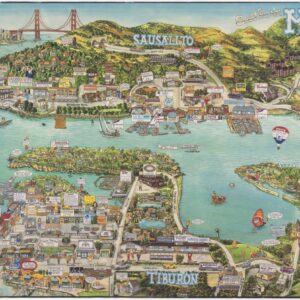Oregon and California on the Eve of the Mexican-American War.
No. 15. Map of Oregon and Upper California…
Out of stock
Description
An influential map of the Oregon Territory and Mexican Upper California, produced on the eve of the Mexican-American War by Samuel Augustus Mitchell in 1846 for his School Atlas… Designed to Illustrate Mitchell’s School and Family Geography.
Based largely on John C. Fremont’s 1845 ‘Map of an exploring expedition to the Rocky Mountains…,’ here Mitchell offers an understanding of the geography of lands that would soon be annexed by the United States in the Mexican-American War. As explained below the title, the border of the Oregon Territory follows the 49th parallel north, after an agreement between the United States and Great Britain in 1846, but the extent of the former U.S. claim is displayed near top.
Mountains, waterways, and Native American groups are the primary features labelled here, along with scattered settlements and forts, including the ‘Pueblo de los Angelos.’ Along the Sacramento River is Nueva Helvetia, the settlement, fortress, and trading post founded by John Sutter in 1839 as part of a larger rancho granted to him by the Mexican government. Just two years after this map’s production, gold would be discovered at Sutter’s Mill on the Rancho Nueva Helvetia, causing it to be inundated by gold seekers soon afterwards.
An inset at bottom-left, labelled Map No. 16 of the School Atlas, displays the area around Fort Vancouver along the Columbia River, including Oregon City, established by the Hudson Bay Company in 1829. When it was incorporated in 1844, it was the first American city to do so west of the Rocky Mountains.
Cartographer(s):
Samuel Augustus Mitchell (1790 – 1868) was an American geographer and bookseller. During the middle of the 19th century, he became the dominant commercial publisher of geographic materials in America.
Mitchell worked as a teacher of geography before turning to publishing, but he found the materials available to students both antiquated and lacking, so he decided to abandon teaching in favor of producing geographic textbooks and maps. He quickly became one of America’s greatest cartographic publishers and played a decisive role in making Americans aware of their country’s geography.
Condition Description
Toning along edge. Light foxing.
References







